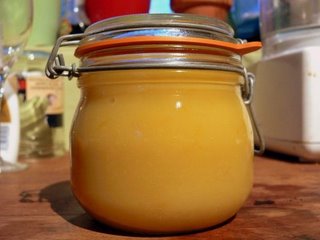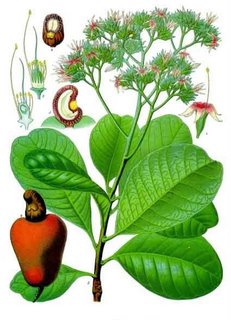 Have you ever had one of those days when you’ve suddenly noticed that you’ve accidentally bought fifteen lemons? I had one of those on Friday, and decided to use the lemons life had given me to make some lemonade. (Dead easy – maple syrup and lemon juice in iced water to taste.) There were still lemons left over. I decided to test one of the heavy pans in the new Le Creuset Satin Black glaze that Dr W (the wonderful, thoughtful Dr W) bought me for my birthday; they promise to be good at distributing a very slow, even heat. Perfect for lemon curd.
Have you ever had one of those days when you’ve suddenly noticed that you’ve accidentally bought fifteen lemons? I had one of those on Friday, and decided to use the lemons life had given me to make some lemonade. (Dead easy – maple syrup and lemon juice in iced water to taste.) There were still lemons left over. I decided to test one of the heavy pans in the new Le Creuset Satin Black glaze that Dr W (the wonderful, thoughtful Dr W) bought me for my birthday; they promise to be good at distributing a very slow, even heat. Perfect for lemon curd.
If you’re lucky enough to be able to get your hands on American Meyer lemons (a superbly lemonsome lemon) or thick-skinned, aromatic Sicilian lemons, you should immediately drop everything else you’re doing and use them to make curd. It’s a wonderful part of the English nursery tea – try it as a spread on some good, crusty toast, along with a cup of Earl Grey tea. The aromatic lemon zest in the curd and the bergamot in the tea are perfect partners.
 You probably have all the ingredients you need to make lemon curd in the house already (although Meyer or Sicilian lemons are best, any unwaxed lemon will make a delicious curd), and it’s very quick – it should only take you about 40 minutes, at most, from the time you start to zest your lemons to the satisfying moment when you ladle the lovely primrose goo into jars. Home-made lemon curd is a million times nicer than the shop-bought stuff, and lasts for about six weeks in the fridge. To make about 1.25 kg of lemon curd, you’ll need:
You probably have all the ingredients you need to make lemon curd in the house already (although Meyer or Sicilian lemons are best, any unwaxed lemon will make a delicious curd), and it’s very quick – it should only take you about 40 minutes, at most, from the time you start to zest your lemons to the satisfying moment when you ladle the lovely primrose goo into jars. Home-made lemon curd is a million times nicer than the shop-bought stuff, and lasts for about six weeks in the fridge. To make about 1.25 kg of lemon curd, you’ll need:
4 lemons
4 large eggs
350g caster sugar
250g butter
2 teaspoons cornflour
Start by breaking the eggs into a heavy saucepan away from the heat. Beat the eggs thoroughly with a balloon whisk. Tip the grated zest and juice of the lemons over the eggs with the sugar, the butter, cut into tiny cubes, and the cornflour. (Strictly speaking, the cornflour is a cheat’s ingredient – it doesn’t add any flavour, and all the thickening comes from the eggs, but the cornflour provides a guarantee that your curd will not curdle. I’ve never had a lemon curd go wrong with a small addition of cornflour.)
Put the saucepan over a medium/low heat, and start to go at it with a balloon whisk. Whisk constantly until the butter has all melted. After another eight minutes or so of hard whisking, the curd will start to thicken. Turn the heat down to its minimum and keep on whisking, making sure you get into every corner of the pan, for another three minutes or so, until the curd is deliciously thick (it will continue to thicken as it cools down). Ladle immediately into sterilised jars and refrigerate once cool.

